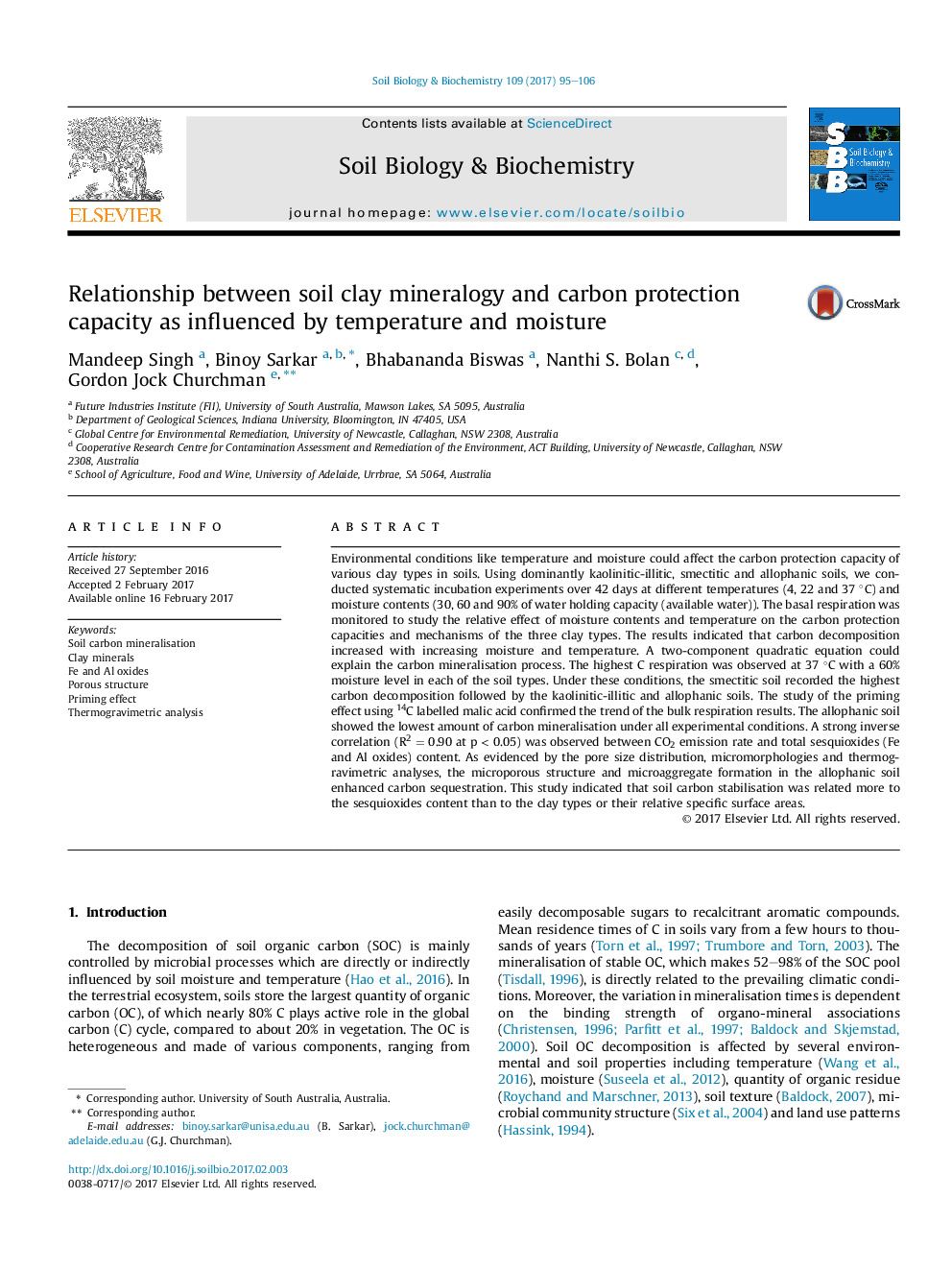| کد مقاله | کد نشریه | سال انتشار | مقاله انگلیسی | نسخه تمام متن |
|---|---|---|---|---|
| 5516478 | 1542575 | 2017 | 12 صفحه PDF | دانلود رایگان |
- Soil C stabilisation was studied in varying clay minerals and environmental conditions.
- Respiration followed the trend: smectitic > kaolinitic-illitic > allophanic soil.
- Respiration increased with moisture content and temperature.
- Sesquioxides inhibited microbial decomposition of soil organic matter.
- 14C-malic acid addition resulted in a positive priming effect in all soil types.
Environmental conditions like temperature and moisture could affect the carbon protection capacity of various clay types in soils. Using dominantly kaolinitic-illitic, smectitic and allophanic soils, we conducted systematic incubation experiments over 42 days at different temperatures (4, 22 and 37 °C) and moisture contents (30, 60 and 90% of water holding capacity (available water)). The basal respiration was monitored to study the relative effect of moisture contents and temperature on the carbon protection capacities and mechanisms of the three clay types. The results indicated that carbon decomposition increased with increasing moisture and temperature. A two-component quadratic equation could explain the carbon mineralisation process. The highest C respiration was observed at 37 °C with a 60% moisture level in each of the soil types. Under these conditions, the smectitic soil recorded the highest carbon decomposition followed by the kaolinitic-illitic and allophanic soils. The study of the priming effect using 14C labelled malic acid confirmed the trend of the bulk respiration results. The allophanic soil showed the lowest amount of carbon mineralisation under all experimental conditions. A strong inverse correlation (R2 = 0.90 at p < 0.05) was observed between CO2 emission rate and total sesquioxides (Fe and Al oxides) content. As evidenced by the pore size distribution, micromorphologies and thermogravimetric analyses, the microporous structure and microaggregate formation in the allophanic soil enhanced carbon sequestration. This study indicated that soil carbon stabilisation was related more to the sesquioxides content than to the clay types or their relative specific surface areas.
Journal: Soil Biology and Biochemistry - Volume 109, June 2017, Pages 95-106
